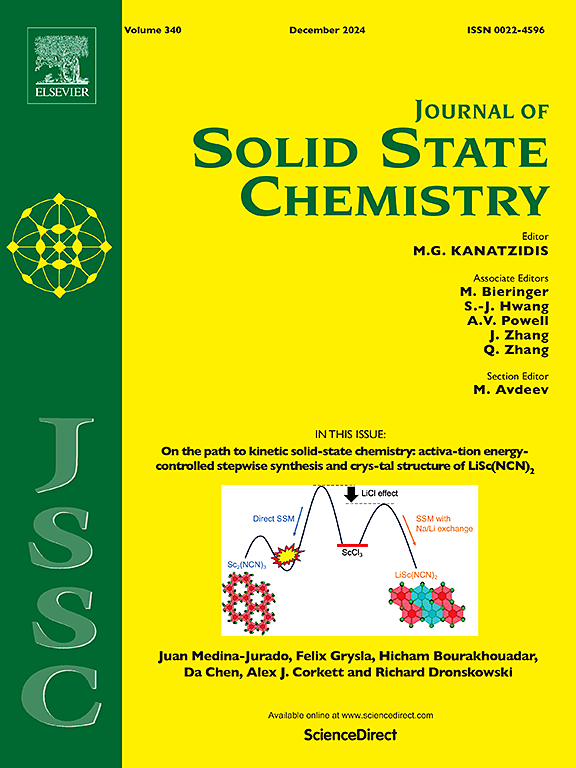Encapsulating tin disulfide nanoparticles in carbon nanofibers for durable sodium storage
IF 3.2
3区 化学
Q2 CHEMISTRY, INORGANIC & NUCLEAR
引用次数: 0
Abstract
Due to its unique layered structure and high theoretical capacity, tin disulfide (SnS2) is regarded as a promising anode material for sodium-ion batteries. However, its practical application has been hindered by relatively poor conductivity and severe volumetric changes during cycling. Herein, carbon nanofiber encapsulated SnS2 nanoparticles, SnS2@CNF, has been synthesized via a gaseous sulfidation process from a Sn-based metal-organic compound (Sn-MOC)@PAN electrospun precursor. Benefiting from precise control of the SnS2 particle size, sodium-ion transport has been facilitated with superior sodium storage performance. The SnS2@CNF anode exhibits long-term cycling stability (457 mAh g−1 after 1500 cycles at 5 A g−1) and high reversible capacity (661 mAh g−1 after 100 cycles at 0.5 A g−1). When paired with the Na3V2(PO4)3 cathode, the SnS2@CNF//NVP presented an energy density of 161 Wh kg−1, indicating its significant potential for practical applications.

求助全文
约1分钟内获得全文
求助全文
来源期刊

Journal of Solid State Chemistry
化学-无机化学与核化学
CiteScore
6.00
自引率
9.10%
发文量
848
审稿时长
25 days
期刊介绍:
Covering major developments in the field of solid state chemistry and related areas such as ceramics and amorphous materials, the Journal of Solid State Chemistry features studies of chemical, structural, thermodynamic, electronic, magnetic, and optical properties and processes in solids.
 求助内容:
求助内容: 应助结果提醒方式:
应助结果提醒方式:


